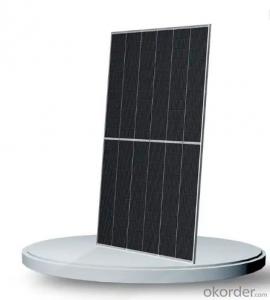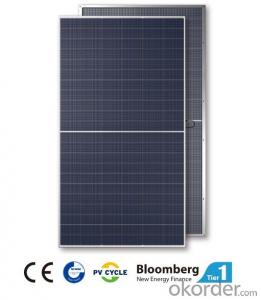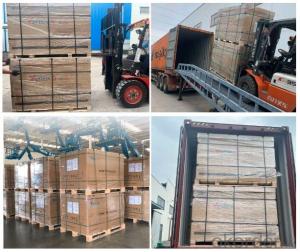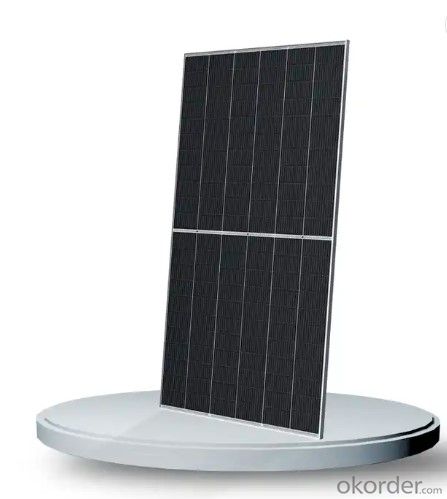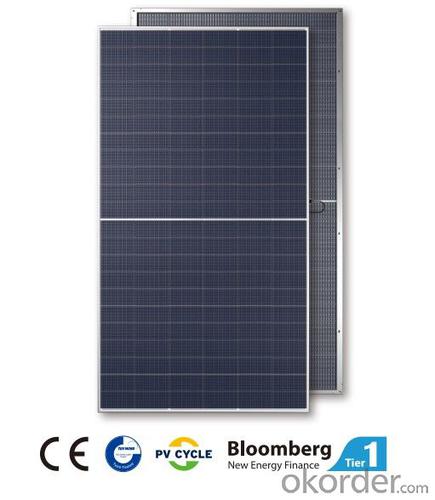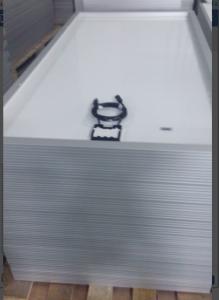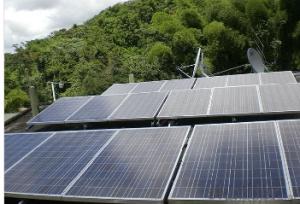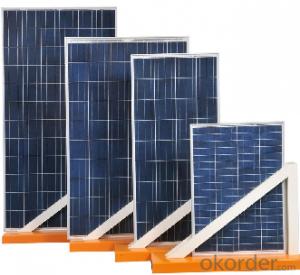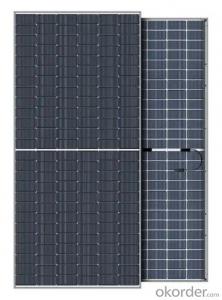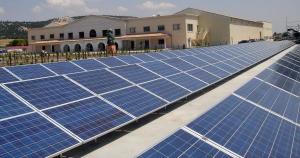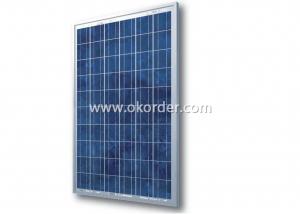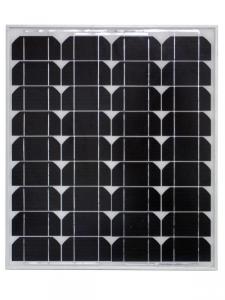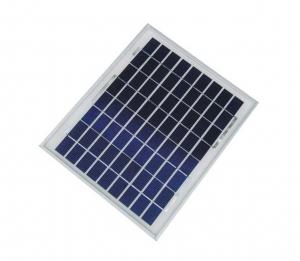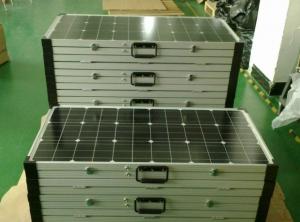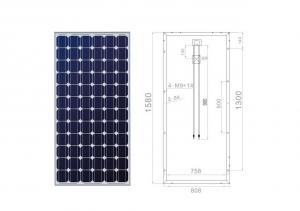Vertically Mounted HJT Shingled Solar Panel 700W Mono Solar Panel 700W PV Module NCQ
- Loading Port:
- SHANGHAI
- Payment Terms:
- TT OR LC
- Min Order Qty:
- 10 pc
- Supply Capability:
- 100 pc/month
OKorder Service Pledge
OKorder Financial Service
You Might Also Like
Specification
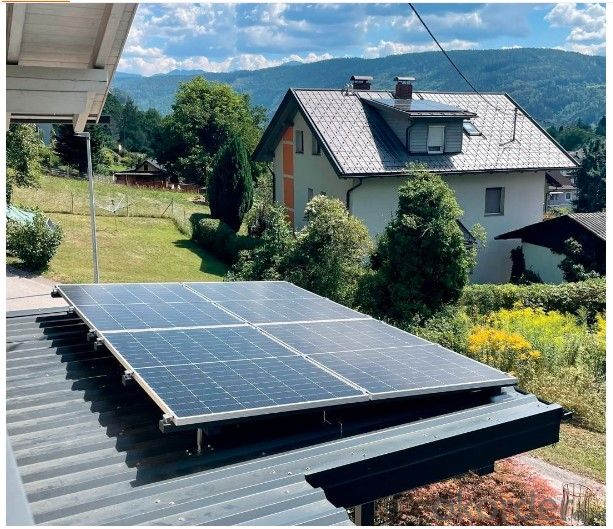 Ø OPERATING PARAMETERSOPERATIN
Ø OPERATING PARAMETERSOPERATIN
Maximum System Voltage | 1500V/DC(IEC) |
Operating Temperature | -40°C-+85°C |
Maximum Series Fuse | 35A |
Maximum Test Load,Push/Pull | 5400Pa/2400Pa |
Conductivity at Ground | ≤ 0.1Ω |
Safety Class | Ⅱ |
Resistance | ≥100MΩ |
Voc and Isc Tolerance | ±3% |
Bifaciality | 80±5% |
Ø MECHANICAL DATA
Solar Cell Type | Mono 210×105 mm(8.3×4.1 inches) |
Number of Cells | 132 [2 x (11 x 6) ] |
Module Dimensions | 2384×1303×35 mm(93.9×51.3×1.4 inches) |
Weight | 38.7 kg(85.3 lb) |
Front Cover | High transmission, AR coated tempered glass, 2.0mm |
Back Cover | High transmission, Tempered, White Grid Glass/AR coating(optional), 2.0mm |
Frame | Silver, anodized aluminium alloy |
J-Box | ≥IP68 |
Cable | 4.0 mm2 solar cable, ≥300 mm(11.8 inches)/customizable |
Number of diodes | 3 |
Connector | MC4 EVO2 compatible |
Ø PACKAGING CONFIGURATION
Module per pallet :31 pieces
Module per 40'HQ container: 17 pallets, 527 pieces
Ø QUALIFICATIONS & CERTIFICATES
ü IEC 61215, IEC 61730
ü ISO 9001: Quality Management System
ü ISO 14001: Environment Management System
ü ISO 45001: Occupational Health and Safety
ü IEC 62941: Design and Manufacture of Crystalline Silicon Photovoltaic Modules
Ø JETION SOLAR
As a member of CNBM - a Fortune 500 company, Jetion Solar provides various product solutions, global EPC service and financing. Its standard and high- efficiency product offerings are among the most powerful and cost-effective in the industry. Till now, Jetion Solar has cumulatively more than 10 GW module shipment and 1 GW global EPC track records.
Installation instruction must be followed.See the installation manual or contact our technical service department for further information on approved installation.
The specification and key features described in this data sheet may deviate slightly and are not guaranteed. Due to ongoing innovation, R&D enhancement, Jetion.
Solar (China) Co., Ltd. reserves the right to make any adjustment to the information described herein at any time without notice. Please always obtain the most.
recent version of the data sheet which shall be duly incorporated into the binding contract made by the parties governing all transactions related to the purchase and sale of the products described herein.
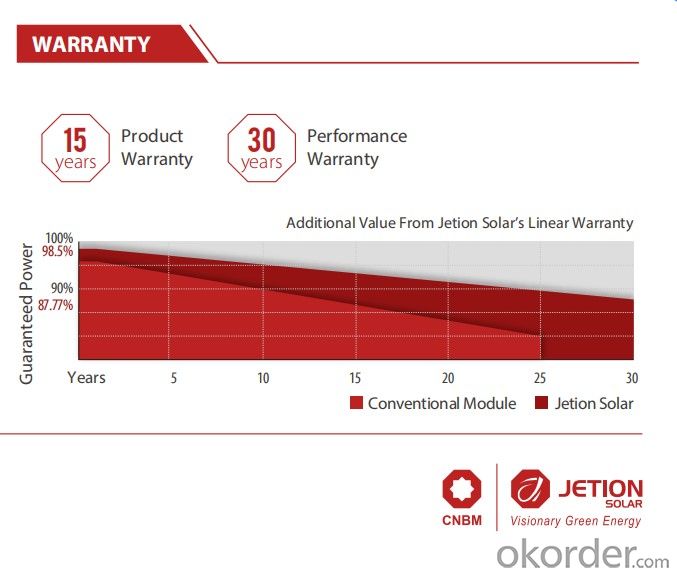
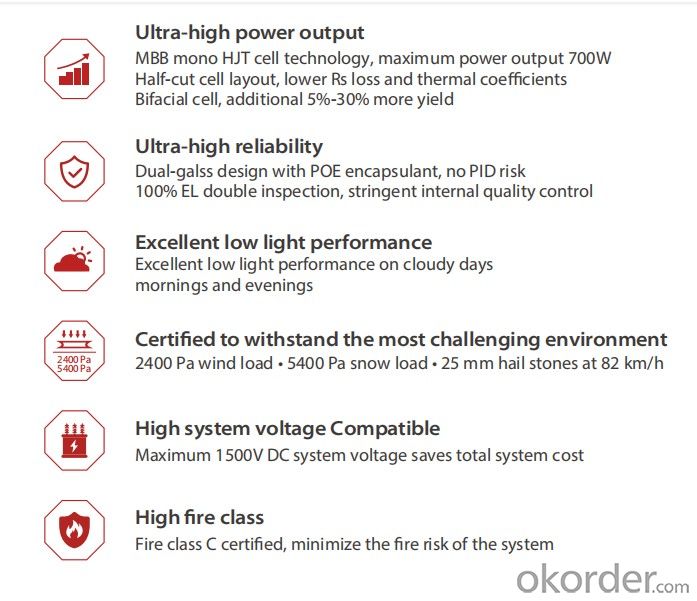
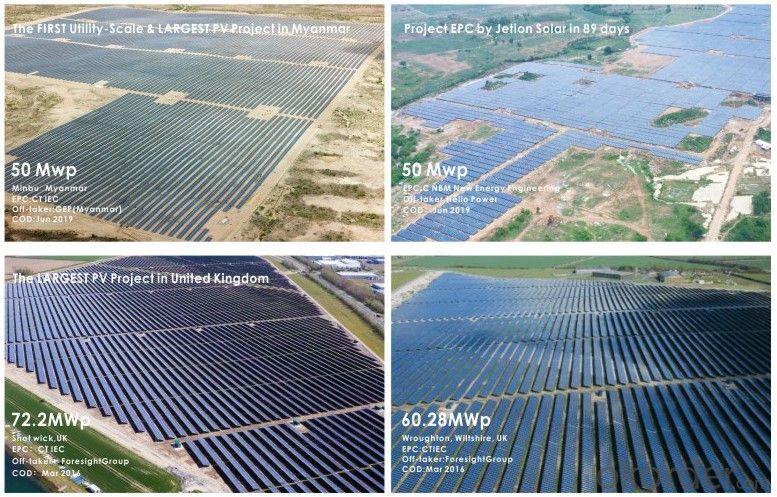
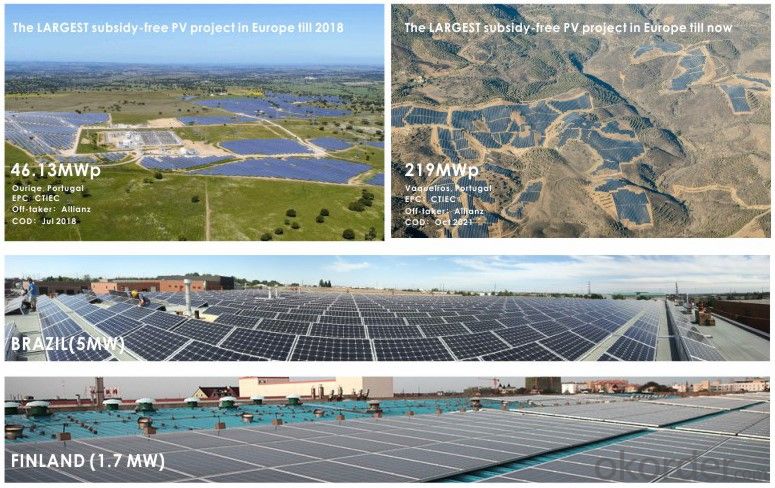
Ø FAQ
Q:How can we guarantee the products quality?
A:Always provide the esteemed buyer a pre-production sample before mass production; Always testing every product before despatching the shipments;
Q:What products we can supply you?
A:Solar Panel,Inverter,Mounting System,Battery,PV Cable,Distributor Box,Pv Connector,Etc
Q:Where is your Manufacturer located? How can I visit there?
A:Our factory located in 501, Building 1, No. 600, Tongjiang Middle Road, Changzhou City, Jiangsu Province,China
Q:Can the products pricing be cheaper?
A:Of course, you will be offered a a very good discount with large quantities.
Q: Can print our company‘s logo on the PV panels?
A:Yes! And we accept the OEM&ODM orders.
- Q: Can solar panels be used for powering a manufacturing facility?
- Yes, solar panels can be used to power a manufacturing facility. Solar energy can be converted into electricity, which can then be used to power various processes and equipment in a manufacturing facility. This can help reduce reliance on traditional energy sources and promote sustainability. However, the feasibility and capacity of solar power for a manufacturing facility would depend on factors such as the facility's energy requirements, available space for solar panel installation, and local sunlight conditions.
- Q: Can solar panels be used during a power outage?
- No, solar panels cannot be used during a power outage unless they are connected to a battery storage system.
- Q: can a small solar panel be charged with lamps?
- Sure!...did you ever use a solar powered calculator indoors under a lamp?? It works just fine.
- Q: If a solar panel has a power rate of 80 Watts and efficiency of lets say 30%. Does that mean the maximum power this solar panel can generate is (30/00)*80=54 Watts or its just 80 Watts?
- If it says STC or Standard Test Conditions on the nameplate or documentation, then that means 80 watts under bright sun at an unrealistically cool temperature. It is rare to see that power in real life, except when the perfect storm of conditions come together. There is also a PTC rating for some panels, which is more realistic. If the panel does not say STC or PTC, the manufacturer is free to make up whatever test they feel like, which generally leads to ridiculously overstated power. As for efficiency, for residential panels, that's generally only of academic interest. A 80-watt panel is 80 watts, regardless of the efficiency. A more efficient panel will take up slightly less space, but most people are more interested in the total price, since roof space is generally not an issue.
- Q: I have a cabin in the woods and need more light. I do have enough sun but I was wondering how or where do I get a solar panel to lead to a power outlet? In a perfect world I would like to get a solar panel with a connecting wire to an outlet or something so I could power a small TV. I know its hard enough but can I get that pre-made? Or even lastly should I look at wind power consider I would like this to be under $500? Thank you for putting up with this bundle of questions.
- Wow. I couldn't tell you how much something like that would cost, but I would expect it to be pretty high. I don't think you are going to find a panel out there that is going to pump out enough juice to provide 0ac. It would involve a battery system and a DC to AC power inverter. You would have to let the system charge for a time and then you would be able to use if for a little while.
- Q: Can solar panels be used for street lighting?
- Yes, solar panels can be used for street lighting. By harnessing the energy from the sun, solar panels can power street lights, eliminating the need for electricity from the grid and reducing carbon emissions. Solar-powered street lighting systems are increasingly being adopted as a sustainable and cost-effective solution for illuminating streets and public spaces.
- Q: Have a 20V 40W solar panel and it is attach to two backup batteries. Just want to know know how many watt of inverter do I need?
- It depends on what you want to run from the panel. A 20W inverter might last a long time, but would not run much. A 00W inverter might run down your batteries in a few hours. It might help if you posted how much capacity (Volts, Amp-Hours) the batteries have.
- Q: thinking of getting a portable solar panel laptop charger...may be a stupid question but may be a very intelligent one as well ;)
- As long as the solar panel has access to light it will operate. If you can keep it in the sunlight it will work a lot better than off the internal lights on the plane. Depending on the plane/lighting/your position, there might not be enough ambient light available for the solar panels to run your laptop.
- Q: I have a question about solar panels. What are the benefits of this system if I installed in my home. for example i know it produces electricity but does it do anything else? How many panel would you guys think I would need for 2000 sq ft. do you know if it produces hot water? Thanks for your help
- Solar panels have been expensive, and not $00,000 about 30 to 50. There are new technologies that are just coming on line which supposedly reduce that for the same output by /2 to 2/3's which will, when these become widely available finally become practical, with tax breaks and incentives for the majority of people, either in their homes or businesses. I believe there are some panels that position the panels in such a way that you can buy a hot water collector under the photovoltaics and will produce hot water as well.
- Q: How do solar panels perform in cloudy weather?
- Solar panels do generate electricity even in cloudy weather, although their efficiency is reduced compared to sunny days.
Send your message to us
Vertically Mounted HJT Shingled Solar Panel 700W Mono Solar Panel 700W PV Module NCQ
- Loading Port:
- SHANGHAI
- Payment Terms:
- TT OR LC
- Min Order Qty:
- 10 pc
- Supply Capability:
- 100 pc/month
OKorder Service Pledge
OKorder Financial Service
Similar products
Hot products
Hot Searches
Related keywords
